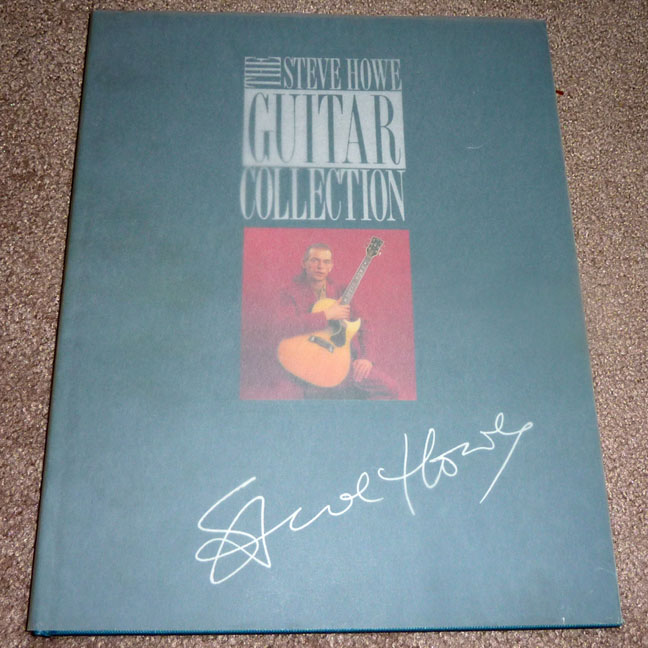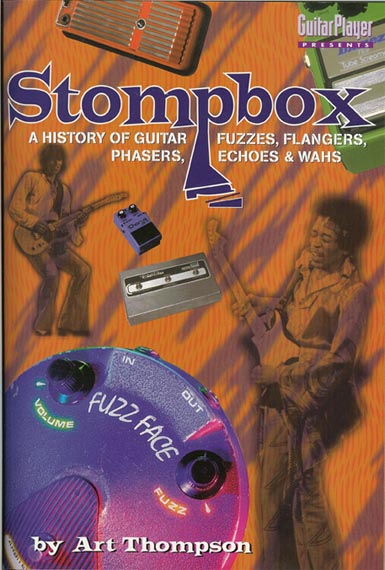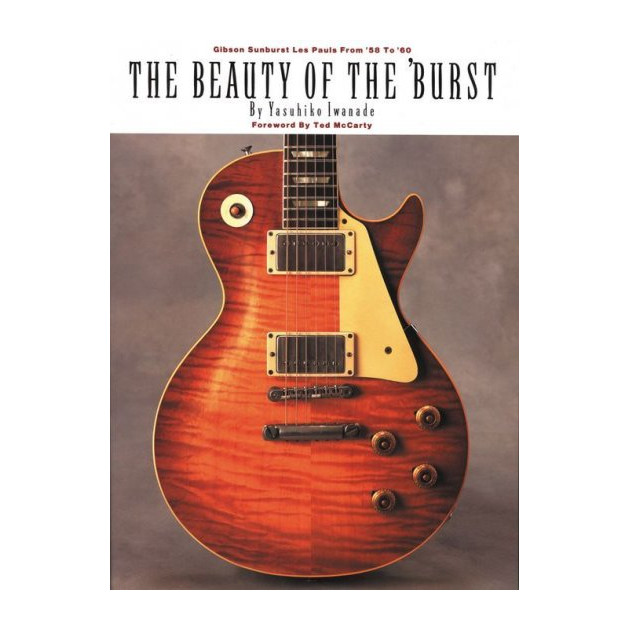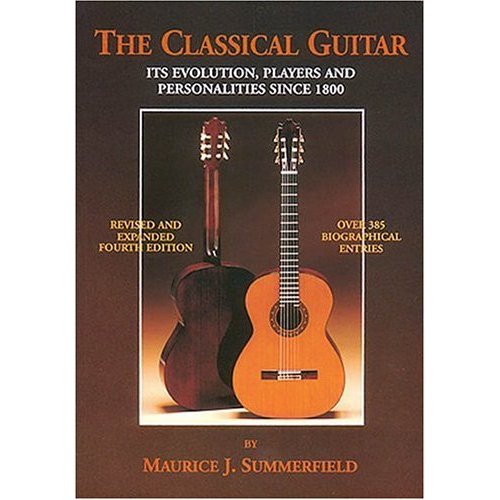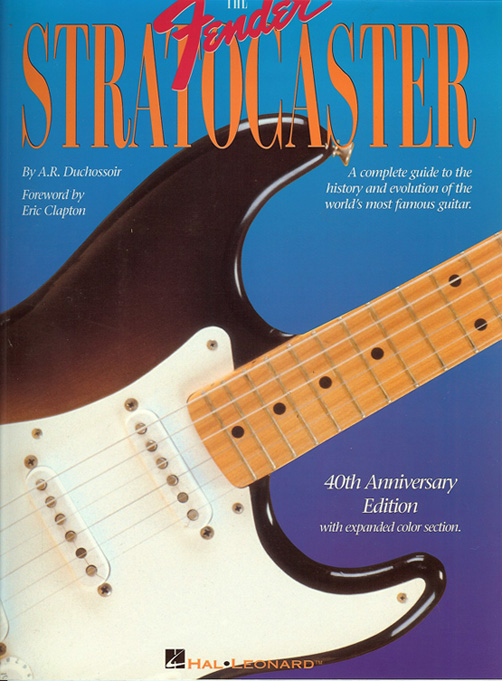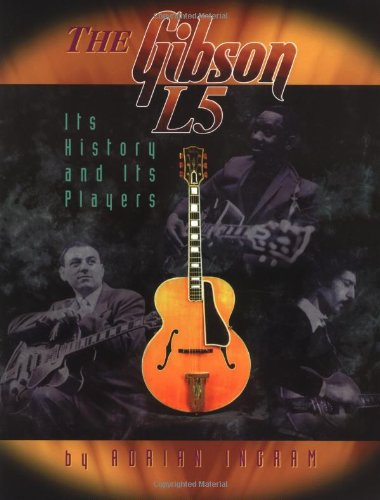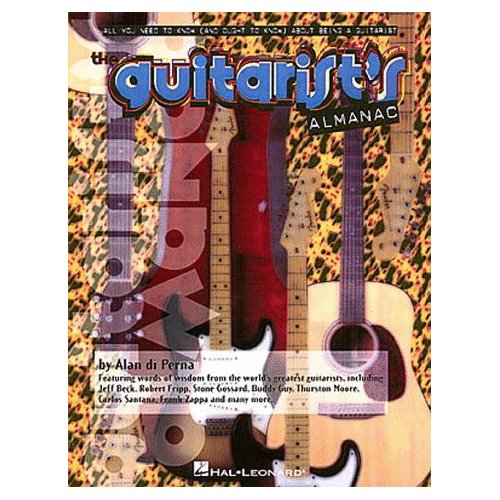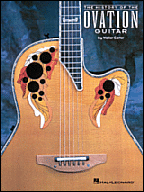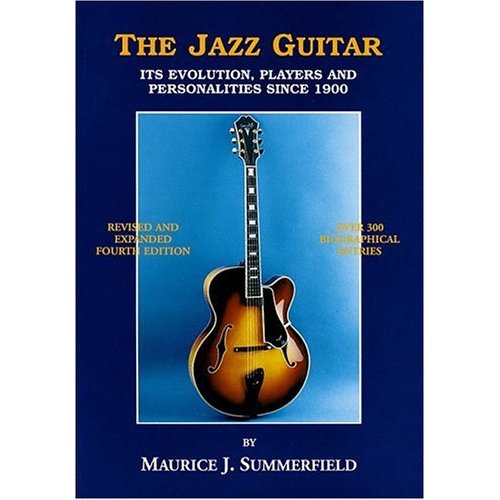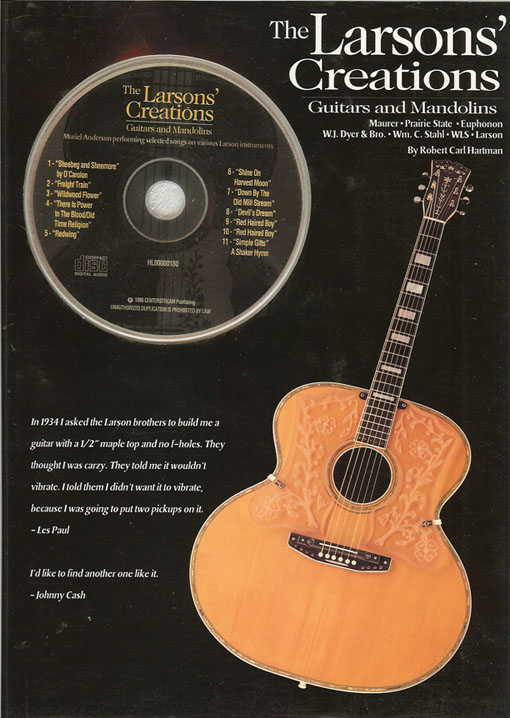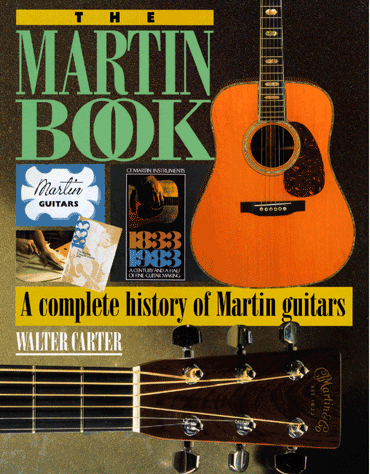Manufacturers
Categories
- Audio Recording Hardware - (306)
- Bargain Basement - (91)
- Computers - (5)
- DJ Hardware and Software - (20)
- EMB Book Shop - (187)
- -Instructional - (80)
- -Interesting Reading - (45)
- -Bass - (5)
- -Drums - (3)
- -General Interest - (6)
- -Guitars - (27)
- -Keyboard Instruments - (1)
- -Music Styles - (3)
- -Sheet Music & Music Books - (9)
- -Video/DVD/Tapes/Records - (53)
- Guitar - (89)
- Live Sound - (88)
- MIDI Hardware - (73)
- Music Software - (1140)
- Support/Lessons - (6)
- Used Gear - (139)
- Video Creation Hardware Software - (8)
Specials [more]

iZotope Stutter Edit 2 Effects Plug In eLicense
Save: 85% off
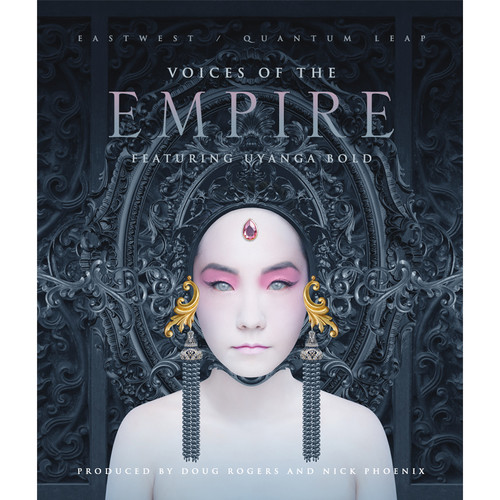
East West Voices of the Empire Mac PC Instrument eLicense
Save: 47% off
Rare New Steve Howe Guitar Collection Hardcover
This is a never sold NEW copy with a wax cover. Perfect for the collector.
Throughout his consistently successful career, rock guitarist Steve Howe has built up a collection of guitars which is unparalleled in diversity and richness. For the first time, this book offers a private view of Steve's fabulous collection, showing 125 instruments ranging from antique lyre guitars to modern solidbody electrics.
During the 1970s Steve Howe was guitarist in Yes, the most successful and adventurous of all progressive rock groups. In 1981 Steve formed Asia, since when he has worked as a member of GTR (1986), Anderson Bruford Wakeman Howe (1989), and in the reunited Yes of 1991. He has also made four solo albums, was instrumental in the production of the Symphonic Music of Yes album (1993), and has appeared as a guest guitarist on recordings by Queen, Lou Reed, and many others. Every instrument in The Steve Howe Guitar Collection is shown in superb full color photography, some at nearly two-thirds actual size on special fold-out pages. The work of 40 instrument makers is represented, including celebrated companies like Gibson, Fender and Martin alongside less familiar names such as Panormo, Sho-Bud and Levin, dating from the 1780s to the 1990s. As well as the standard guitars, the collection includes a host of related instruments such as banjos, bass guitars, guitar-synths, lutes, tenor guitars, mandolins, pedal steel guitars, sitars and harp guitars. Steve's engaging commentary details the circumstances in which he acquired each of the instruments in his collection. He pinpoints exactly how the guitars have been used during 30 years of recordings and tours, from his first pop group The Syndicats (1963) to his latest solo album The Grand Scheme of Things (1993).
The SteveHowe Guitar Collection is a unique combination of guitar history, musical memorabilia and beautiful photography. It brings alive the most fascinating and wide-ranging individual collection in instruments ever seen together in one book, and documents the continuing career of one of rock's finest guitarists.
Stompbox by Art Thompson
-- The story of the device that created some of the most famous sounds of the '60s and '70s
-- Includes 200 photos of these wild, sound-shaping inventions
-- Appeals to the millions of guitarists who use stompboxes today
The Stones' "Satisfaction". The Beatles' "Taxman". Jimi Hendrix' "Star-Spangled Banner/Purple Haze". These historical songs plus thousands more from the '60s and '70s owe a huge debt to a little gadget called the stompbox.
Stompboxes are fuzz boxes, talk boxes, wah-wah pedals, reverb and tremolo bars, and other add-on devices electric guitarists use to distort and sculpt their instrument's sound, creating outrageous effects. Stompboxologist Art Thompson describes the development of these odd little units with the unique analog tones, and shows how they're making a powerful comeback today -- even over digital effects.
Tracing its roots to the 1948 invention of the transistor, Thompson reveals how the stompbox's creators, manufacturers, and guitarists created weird, riveting effects that enticed more and more players to innovate.
Readers go behind the scenes to see some of the musical accidents that led to the stompbox. For example, at the 1961 Nashville studio session for Marty Robbins's "Don't Worry", when a channel in the mixing board began distorting, the guitarist kept playing -- creating Nashville's first recorded fuzz solo and an insatiable demand for the strange effect.
Stompboxes had wacky shapes, wild colors, and crazy names like Fuzz Wah Diddy and Orange Squeezer. This unusual book ispacked with photos -- more than half in color -- of these relics as well as vintage reissues by the key manufacturers.
The Art of the Amplifier by Michael Doyle (Collectable)
This is a collectable book that's never been sold, in perfect condition. Michael Doyle's The Art Of The Amplifier pays tribute to the mechanical and aesthetic beauty of the tube amp, focusing on guitar amplifiers but also examining hifi audio amps and very ornate early radios. The book contains many stunning full-color photos and informative commentary, with amplifiers grouped by manufacturers. Represented are Ampegs, Dumble, Fender, Groove Tubes, Gibson, Gretsch, Hi Fi, Marshall, Mesa Boogie, Peavey, Vox, Watkins, and many others.
$49.95The Beauty of the 'Burst by Yasuhiko Iwanade
Finally, the long-awaited English edition of this historic Japanese book is here! The Beauty of the 'Burst pays tribute to Gibson's magnificent Sunburst Les Pauls made between 1958 and 1960, the most highly prized solidbody electric guitars ever. The magnitude of their value is directly related to their look (outrageous wood patterns, or "figured" timber), since non-players are paying top dollar for them. The book features lavish full-color photos of these beautiful instruments throughout; the guitars of famous players; a foreword by Ted McCarty; a bio of the author, world renowned collector Yasuhiko Iwanade; and the "Science of the Burst" section with over 30 pages of detailed reference facts on every facet of the guitar, including colors, wood figure, pick-ups, hardware and qualities of "voice." This may be the closest guitarists will ever be able to get to these incredibly collectible beauties! 216 pages, 8-1/2 inch. x 11 inch. Softcover.
The Classical Guitar 4th Ed by Maurice Summerfield Collectable
This is a collectable book in New condition and never been sold.
This is the fourth edition of Maurice J. Summerfield's highly acclaimed
ultimate reference book on the classical guitar. This book
has all the original biographical entries updated with photographs
where applicable. There are also over 100 new biographical entries in
the players, composers, and makers section. This edition gives the
reader a full and clear picture of the classical guitar\'s development
since the beginning of the nineteenth century. Also included are
informative sections on composers, scholars, flamenco guitarists and
guitar makers. The book's collection of several hundred photographs is
the most complete to be published in one volume. There are extensive
listings of the most important classical guitar recordings. The final
section, Sources of Supply, guides readers to where they can obtain the
books, recordings, music and magazines listed in the book. Without
doubt, this edition will be the essential work of reference on the
subject of classical guitar for years to come. 8-1/4 x 11-1/2, 384 pages
The Fender Stratocaster 40th Anniversary Edition
The Fender Stratocaster 40th Anniversary Edition. A complete guide to the history and evolution of the world's most famous guitar.
Forward by Eric Clapton
Since its official debut in early 1954, the Fender Stratocaster has become the most imitated electric guitar ever manufactured. Because of it's versatility, durablitity and timeless desgin, it continues to the the instrument of choice for generations of performers.
'
Inside you'll find out everything about this American Classic: the history, the patents and schematics, pricing and handy identifications tips. The color section is packed with dozens of gorgeous photos including the classic models, the rare collectibles and the acclaimed Signature Series.
A must for anyone into electric guitars!
The Gibson L5, It's History & It's Players by Adrian Ingram
Introduced in 1922, the Gibson L5 is the precursor of the modern archtop guitar. It was the first archtop to feature f-holes, which allowed it to project through the horn-dominated bands of the day. Its strong, full, warm sound was an immediate and overwhelming success that turned the heads of makers, players and listeners alike. This book takes a look at its history and most famous players, from its creation, through the Norlin years, to its standing today as the world's most popular jazz guitar. With its stunning 16-page full-color photo section, this book is a must for every guitar enthusiast's collection! 8-1/2 inch. x 11 inch. 112 pages
$29.95The Guitarist's Almanac by Alan De Perna
For guitarists headed out on the road or just down the street for band practice, The Guitarist's Almanac is the perfect take-along companion. It's compact, yet crammed with useful information, from alternative tunings to fret jobs, and from chord charts to guitar lore. Noted axe-wielders like Jeff Beck, Buddy Guy, Carlos Santana, and Pearl Jam's Stone Gossard offer inspiration, tips and anecdotes. Written by veteran music journalist Alan di Perna, The Guitarist's Almanac is lively, entertaining, and practical. 8-1/2 inch. x 11 inch. 80 pages
$12.95The History of the Ovation Guitar by Walter Carer (Collectable)
This out of print paperback book has never been sold. It's in excellent condition. Perfect for the guitar collector.
A major helicopter manufacturer loses his biggest client. At the same time, the guitar market is starting to boom. The man hearkens back to his youth, when he played guitar. He decides to apply the concepts and materials used in building helicopters to make a new kind of guitar. This roundback, fiberglass instrument catches on with one of the nation's most popular entertainers, and the company becomes the biggest acoustic guitar maker in the US. A crafty new novel? No, it's the History Of Ovation. Guitar industry expert Walter Carer relates the story of one of the 20th century's most innovative companies. Features beautiful color photos of Ovation guitars, interviews with Ovation artists, and an appendix of guitar serial numbers for collectors.
The Jazz Guitar by Ashley Mark Publications, Maurice...
This is an out of print, softcover NEW Collectable Book.
Detailed item info
| Size | |
| Height: | 11.8 in. |
| Width: | 8.3 in. |
| Thickness: | 0.8 in. |
| Weight: | 40.8 oz. |
An absolute must for jazz lovers and guitarists alike, this is the first book ever to be written which covers, in a definitive way, the guitar's role in jazz. The new fourth edition has been expanded to include bios of the leading jazz-rock fusion players. The main part of the book is devoted to over 250 detailed biographies of the major jazz guitarists since 1895. The collection of photographs of jazz guitarists is the finest and most complete put together under one cover. In addition, it includes a chapter listing every important jazz guitar recording ever made, and a final section, Sources Of Supply' that ensures that nearly every record, book and piece of music listed can be obtained by the reader. 8 inch. x 11-3/4 inch..
For over 38 years, Maurice J. Summerfield has played, listened to, and studied the jazz guitar. First published in 1978, his book is devoted to detailed biographies of the major jazz guitarists since 1900. Through these, and the chapter devoted to its evolution, the reader can gain a full and clear picture of the guitar's development and role in jazz throughout the 20th century.
The Larsons' Creations: Guitars and Mandolins by Robert Hartman
This book is an account of two brothers who were premier producers of
stringed instruments in the early part of this century. The Larsons were pioneers in building steel
string flat-top guitars using their inventive ideas that produced some
of the strongest guitar bodies ever made. They built steel string
guitars throughout their careers which spanned almost the entire first
half of the 20th century, 1900-1944. Their little
two-man custom shop produced a vast array of hand-made instrument
designs, styles and sizes from 12" parlor guitars to 21" super-jumbos.
During the early part of their careers they built at least four styles
of harp guitars. The most famous of these was made for W. J. Dyer
and Bro. along with the complementary harp mandolins, harp mandolas and
harp mandocellos.Swedish
immigrant cabinet makers Carl and August Larson made instruments under
the brand names of Maurer, Prairie State, Euphonon, W.J. Dyer and Bro.,
Wm. C. and under their own name. They also supplied Wm. C. Stahl with
guitars, harp guitars and a full line of mandolin orchestra instruments
as well as maintaining their own variety of house brands.
The Larsons
creations have become a large part of the history of guitar-making in
America and are considered by many to be pieces of American art and their highly-collectible
creations are considered to day to be some of the finest ever made.
Lovingly researched and written by Robert Hartman, grandson of Carl
Larson,
The Larsons Creations contains sixteen pages of full-color photos of
these artful instruments, classic advertisements, and catalogs.
The accompanying CD features Muriel Anderson, 1989 National
Fingerpicking Champion, describing and playing a selected group of 11
Larson instruments including various sized guitars, a Dyer harp guitar,
a Dyer harp mandolin, other mandolins and a rare Stahl octave mandolin.
The Martin Book By Walter Carter (Hardcover)
The Martin Book chronicles the history of an instrument that mirrors the development of the acoustic guitar and acoustic music in America. This photographic 150-year journey pulls together the strands of the past to create a fascinating and entertaining testimony to the unparalleled quality and craftmanship of the Martin acoustic guitar. It features color photos of 75 classic and modern Martin guitars, a detailed reference section for collectors and enthusiasts, and much more. 7-1/2 inch. x 9-3/4 inch.
$45.95 The Electronic Music Box
The Electronic Music Box



